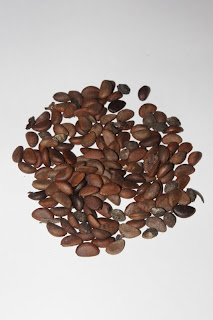
I have been to Bohol about 8 times and the last time was very long ago. I am back and this time it will be a leisure stay. I am accompanying my sister Carol and niece Cydney for a countryside getaway from hot Manila. Hopefully I could see stuff which I did not see in my previous visits and by the looks of what lies ahead, it sounds promising.

It is only now that I have seen the very cute tarsier,
Tarsius syrichta. They could be found in four special stops over at Loboc town as tourist attraction. Our guide, Loy, said four local families were given special DENR permits to exhibit the the furry animals and we got to visit one of them. Here, the tarsiers are displayed along with an array of other Bohol fauna. Other mammals I could distinguish were the flying lemur, the Philippine civet and the Philippine macaque. All these animals could also be seen in some other Philippine islands and some neighboring Asian countries, but the tarsier and the flying lemur (
Cynocephalus volans) are particularly identified with Bohol as they are considered as provincial 'animal logos'.

The tarsier is locally called
maomag, but residents have gotten used to calling it by its English common name. It is so small and looks very cuddly. It reminds me of the diminutive Jedi master, Yoda, of
Star Wars fame. But unlike Yoda, the tarsier's size suggest that they are quite delicate and fragile to handle. A caged wild-caught specimen would eventually kill itself by banging its head to death. From what I gather, the ones living inside this tourist stop are domesticated but not sure if they were captive-grown. They are kept in an open pen, clinging onto ornamental San Fransisco bushes (Codiaeum sp.). Tarsier specimens are not bound but they got used to being fed with crickets, so they do not escape.

The tarsiers look so helpless grabbing onto their chosen branches. While spectators go about snapping pictures of the poor animal, they continue on with their much needed rest. They are nocturnal so their sleep is always being disturbed by tourists who usually come in at day time. That is why it is prohibited to let tourist touch them. No flashes are allowed, so as not to irritate their large eyes. Poor tarsiers!

Having the same problem is the flying lemur or what locals call as
kagwang. It is not related to real lemurs but belongs to the colugo family (which only has 2 members). It is also nocturnal. It hunts for prey at night by gliding from one tree top to the other. Here at their new home, they grew accustomed to being petted by people, only giving back an inquisitive glance.
On the other side of the spectrum, the macaques (
Macaca fascicularis philippensis) on this wildlife stop are bound with ropes to a bamboo post. Unlike their

2 nocturnal neighbors, they could still be active in the daytime and would readily wander off to escape their sort of boundless prison.
Just imagine the lengths of what these animals would have to go through, just to educate us of their existence. In turn we are only amused with their cuteness and their unique appearances. Probably a number of them would still be hunted down and caged for our delight. More would be left homeless while our rainforests are continuously stripped of their resources. It would not be a good end for these unique Bohol creatures.

















































